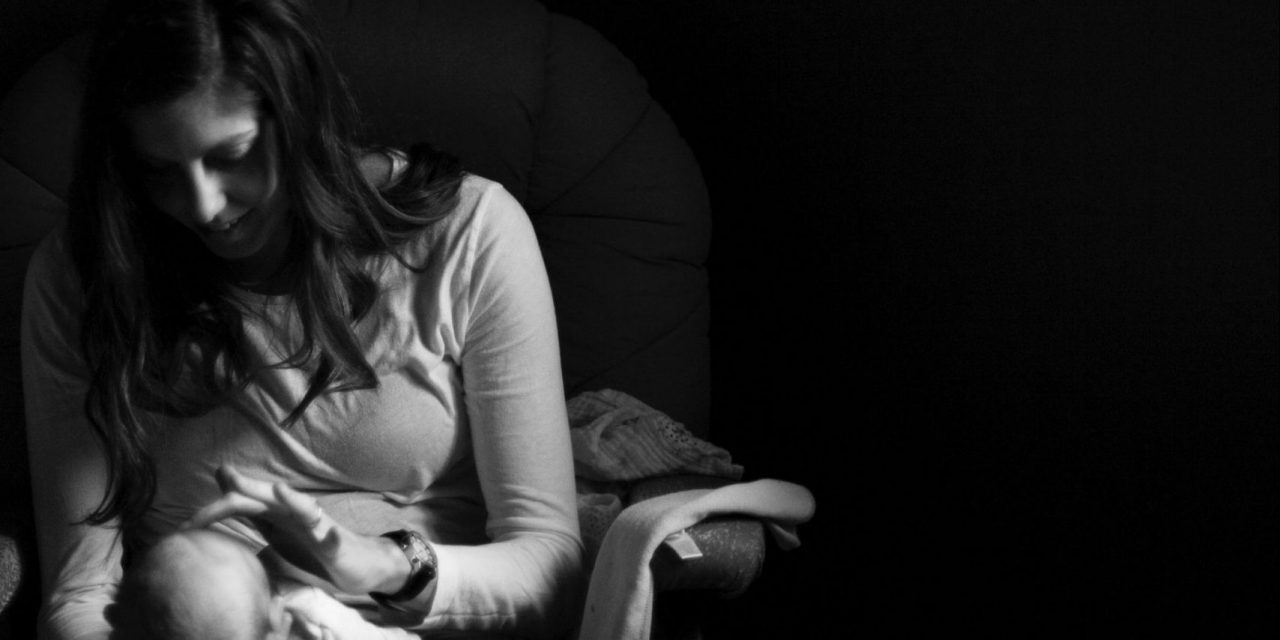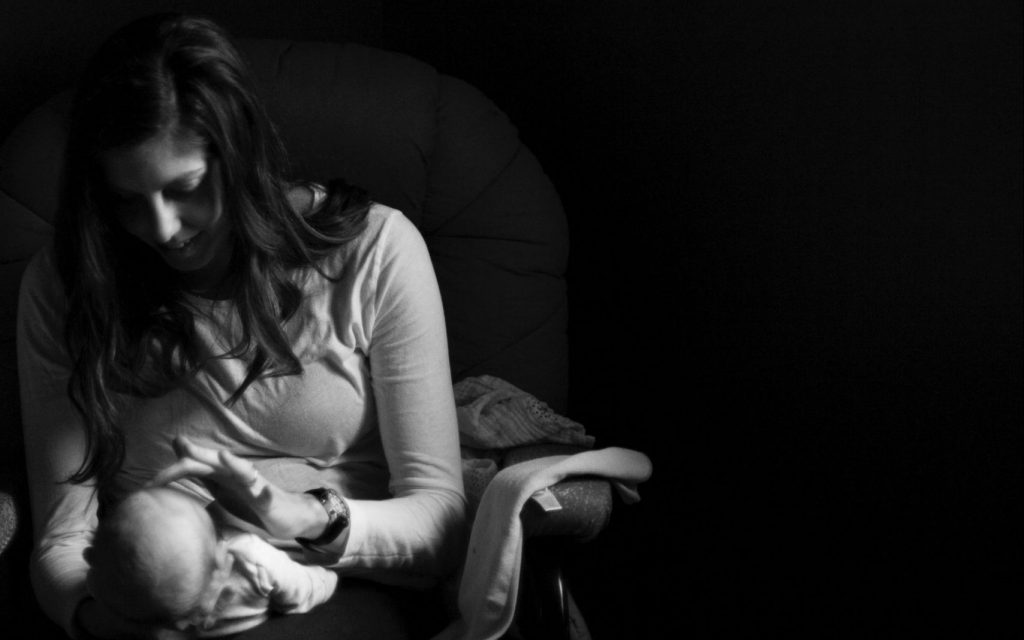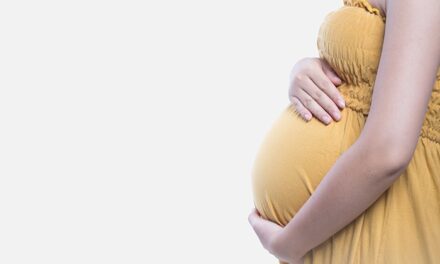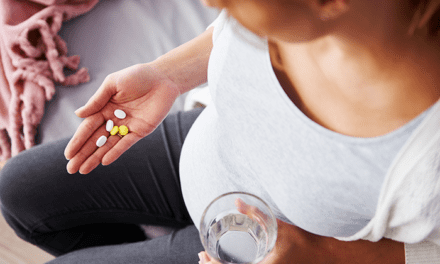As a new mother, the phase right after childbirth is as crucial and important as your pregnancy phase. You need to pay special attention to not just your child’s health but also to your own physical, mental, and emotional health. This blog brings your attention to what your health or wellbeing could look like after childbirth. It gives you an understanding of the postpartum recovery timeline and what the process would look like for you. Read along to know more about it; after all, a healthy mother will best be able to raise a healthy child.
Understanding Postpartum And The Recovery Process
In simple terms, the postpartum period generally refers to the first six weeks after childbirth. It’s a period of adjustment and healing for mothers, who don’t just go through an array of physical changes, but can also witness many changes on an emotional and mental level. Naturally, after your body goes through so many changes, it needs adequate time to heal and get back to its previous self as well.
This healing process after childbirth is termed postpartum recovery. It isn’t just a matter of a few days; postpartum recovery could actually take anywhere between a few weeks to even a few months. This healing process and its timeline are unique to all. It’s important for every woman to understand the needs of her own body and take adequate measures to help it heal.

Postpartum recovery can look and feel very different for different women.
Postpartum Recovery Timeline
As mentioned earlier, there isn’t really one particular timeline that fits all when it comes to fully recovering from pregnancy and childbirth. But there are certain aspects common to most women. To give you a better understanding of what to expect during your postpartum recovery timeline, here are some common facts that you might experience or come across:
1 Week Postpartum
The first week post-delivery is the most intense from all aspects. There’s the excitement and happiness of finally holding your little one in your arms, and at the same time, there is a sudden change inside your body that you’ve never felt before.
Vaginal Birth:
If you gave birth vaginally, you may have experienced vaginal or perineal tears, or you may have had an episiotomy to widen the vaginal opening. Your vagina and the entire pelvic region could be uncomfortable, swollen, or possibly abraded.
Birth Via C-section:
If you had a c-section, then you’ll also be recovering from major surgery. Your hormone levels will be changing rapidly and all your organs would need to shift back into place. It is advisable to follow your doctor’s orders in terms of wound care, not putting pressure on the incision, and keeping the incision clean. You’re also likely to experience incision pain after your epidural wears off. The pain will gradually reduce after the initial few days but the incision site might still be tender for a while.
Other Common Changes:
- Postpartum Bleeding: You can expect to experience some heavy postpartum bleeding including large blood clots in the first week or so after childbirth. This will happen irrespective of whether you had a vaginal or Cesarean delivery. You will also notice vaginal discharge (called lochia) after childbirth. It contains blood and the mucous membrane that lines the uterus during pregnancy. Over time, the bleeding will lighten in volume and color. Stick to using pads for a few weeks until it’s safe for you to use tampons, as advised by your doctor.
- Uterine Cramping: Your uterus will begin the process of returning to its normal size soon after your child’s birth. You’re likely to experience afterbirth pains or strong cramps because of the uterine contractions happening during this time. These pains might feel more intense during breastfeeding because the release of oxytocin strengthens uterine contractions.
- Urinary And Bowel Conditions: You may feel pain or a burning sensation when you urinate at least for the initial days after your delivery. You can have a sitz bath, or use a spray bottle or heating pads to help reduce the pain and swelling. You might also be scared to pass your first stool after giving birth. Uncontrollable bowel movements or passing gas when you didn’t mean to are few things you could experience. After consulting your doctor, you may use a stool softener and start going on short walks to help move things along.
- Breast Changes And Nursing: It is only after a few days postpartum that your breastmilk will “come in” i.e. milk production starts full-scale, filling your breasts with milk. Your breasts may feel full, tender, or uncomfortable because of the amount of milk. The medical term for this condition is engorgement. You might have to release some of your extra milk through massage, breastfeeding, or pumping. Nursing or breastfeeding might seem a little overwhelming at first. To make it a little easier, you can use a good nursing pillow and a tube of nipple ointment.
- Weight Loss: You might still look pregnant after you’ve had a baby and this is completely normal. Do keep in mind that your uterus is still in the process of contracting back to its normal size and you’re still retaining some extra fluids. You’ll continue to lose these fluids over the course of the next few weeks. More importantly, remember that postpartum weight loss happens best when done gradually and in a healthy way. Focus on your diet and consult with your doctor about the exercises that you can gradually indulge in.
- Baby Blues: You may feel a little anxious, depressed, or upset after your child’s birth and that is common among most women post delivery. If these feelings are really strong or uncontrollable then you might also be experiencing postpartum depression. What you should do to help yourself is to reach out to your near and dear ones, talk to your friends or other new moms, discuss with your partner, or reach out to your doctor or therapist whenever you feel the need of talking to someone.
2 Weeks Postpartum
- At this stage, you might start to feel a little better but it’s still important to take things slow as you’re still recovering. Your postpartum bleeding should gradually decrease by now. You might notice the vaginal discharge to be pinkish-brown or yellowish in color. Your vaginal or perineal healing will still be taking place at this stage; likewise, c-section recovery will still be in process.

You may start to feel a little more like yourself after the initial weeks post delivery.
- Some women also experience night sweats or hot flashes in the first month postpartum. This happens due to changes in your hormonal levels and your body trying to shed those extra pregnancy fluids. You might also have swollen breasts or sore nipples from breastfeeding in the initial few weeks.
3 To 6 Weeks Postpartum
- By this time, you might feel a little exhausted caring for your newborn but are also gradually starting to get into a schedule. You’re likely to start feeling a bit more like yourself and may be eager to start looking like your previous self as well. But do keep in mind that your recovery process is still on; indulging in any strenuous activities should be avoided unless you’ve got approval from your doctor.
- Postpartum bleeding should be very light by now and should ideally be coming to an end. However, if you’re still experiencing heavy bleeding or pains, it’s important that you reach out and consult with your doctor. The soreness in your vaginal area should reduce, similarly, c-section scars should also be healing well now.
- You could be experiencing mood changes or postpartum depression at this stage. Although these baby blues are more intense during the first two weeks post childbirth, they could continue for a while even after that. Talking to fellow moms, a close friend, or even your doctor could help you feel better and deal with these baby blues.
6 Weeks To 6 Months Postpartum
- After about 6 weeks, you might be a little closer to feeling like your pre-pregnancy self. This is also when you’re likely to have your postpartum checkup. Your vaginal tears or c-section scars would be checked by the doctor to make sure that they’re healing well. They will also check to see that your uterus has shrunk down to its pre-pregnancy size. This is when you should openly discuss any and every concern that you may have with your doctor.
- Generally, it’s recommended to wait for at least 6 weeks before you have sex for the first time after your child’s birth. You may or may not be willing to indulge in sex at this time and either is okay. Just make sure to openly communicate with your partner and have an honest conversation about what you both want.
- Postpartum hair loss is also common during the first few months postpartum. Your pregnancy hormones are responsible for these changes and they will gradually return back to normal.
Do keep in mind that this postpartum recovery timeline only gives you an idea about what you can expect during the process. For some women, recovery might happen at a faster rate while it might take way longer for others. Listen to your body and give yourself the time and space you need to heal completely.
Tips For Postpartum Recovery
Though a postpartum recovery timeline is unique to all, you might still experience some pain, tenderness, or soreness. Here are some tips for you to keep in mind that can help you with postpartum recovery:
- Eat healthy meals and get the right nutrition. A healthy diet can promote healing in a positive way. Make sure to include whole grains, vegetables, fruits, and protein sources in your diet. Try to also increase your fluid intake, especially if you’re breastfeeding.
- Try to get as much rest as possible. You’ll need to catch up on your sleep to cope with tiredness and fatigue. Yes, your baby will almost always wake you up for feeding or for some other needs. But, it’s also important for you to get adequate rest. Try to rest when your baby is asleep or ask others to look after your baby for a while.
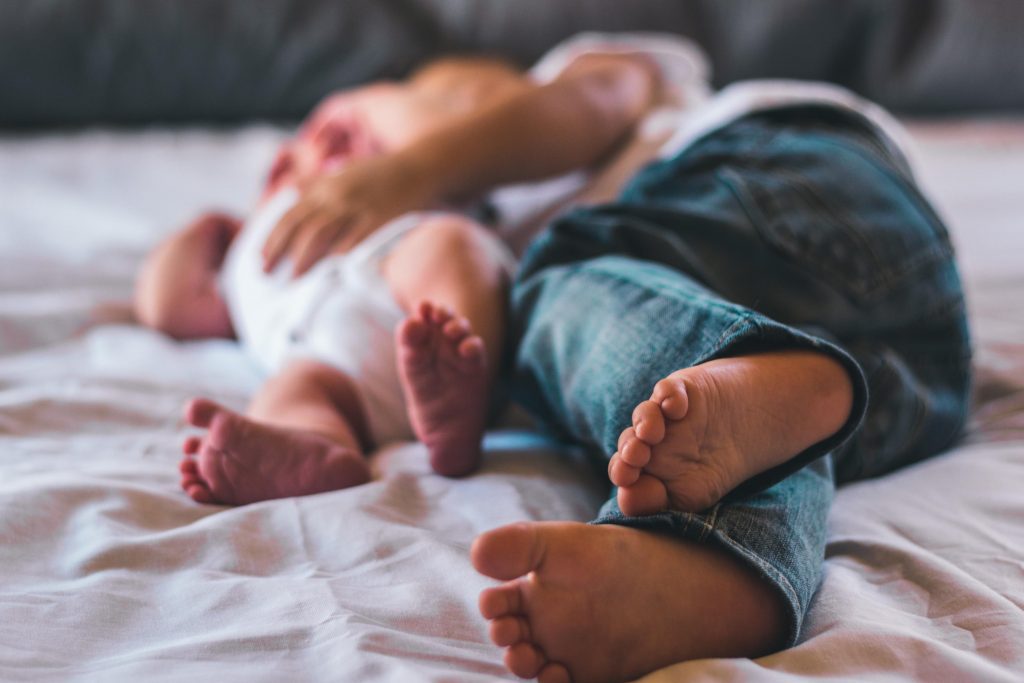
You need to ensure you sleep when your baby does so that you can get your share of rest.
- Postpartum exercise after consulting your doctor will also help in recovery. In all likelihood, you won’t be able to do anything activities for the initial few weeks. But, you can try taking a walk to feel refreshed and increase your energy level.
- Don’t hesitate to ask for any form of help during and also for a while after your postpartum recovery. Your body needs to heal and you also need to feel refreshed mentally, not just for your own wellbeing, but also to enjoy the growing journey of your child. Reach out to friends, family, your doctor, or anyone you feel comfortable with to help you with your postpartum recovery.
Conclusion
Every woman undergoes several changes not just during pregnancy, but also for quite some time post delivery. These changes are physical, mental, and emotional too. The postpartum recovery timeline isn’t exactly the same for every person, so give yourself the space and time that you need to fully recover. Taking things one at a time and focusing on little improvements will help you in your journey of postpartum recovery.
While you may be healing yourself, your focus would also be on your child’s health. After all, the initial few months are also crucial for the baby to adjust to their eating, sleeping, and vaccination schedules. You can take some load off your shoulders by making use of apps like ImmunifyMe. It keeps a digitized record of all your child’s health documents and sends timely notifications for any upcoming appointments. You can also get a customized nutrition plan for your child and keep track of their growth milestones.
FAQs On Postpartum Recovery Timeline
How Long Does Postpartum Pain Last?
In most cases, it takes at least a few weeks to recover from postpartum pain. This time period could be as less as a week or two, or may even extend to up to a few months. Six weeks is said to be the general postpartum recovery period. This time period may also differ based on your personal health and method of delivery (vaginal or Cesarean).
What Should You Not Do Postpartum?
Indulging in any form of high-intensity exercise or neglecting your nutrition should never be the case in your postpartum duration. If you want to exercise or go on a diet, you need to consult your doctor before going ahead. Plus, you need to take care of your vaginal health and avoid the use of tampons or cups unless you’ve consulted with your doctor. You’ll have to use pads at least for the initial few weeks till your vagina gradually heals from the delivery.
You cannot be drinking, smoking, or misusing drugs postpartum. If you have a high fever, heavy bleeding, or pain in your breasts or legs, you should immediately consult your doctor. Don’t try to self-diagnose or ignore your health signs that may need immediate attention.
Does Walking Help Postpartum Recovery?
Yes, walking does help in your postpartum recovery process to quite some extent. You can start by walking during the initial weeks postpartum, but consult your doctor before taking up an exercise routine. It will help keep you physically active and to some extent, also help you be in a better space mentally and emotionally.
When Can I Start Exercising After Delivery?
If you had a healthy delivery, you might be able to start exercising after a week or two post your child’s birth. However, it’s always advisable to consult with your doctor as to when you can start exercising. Do also learn about the exercises that you can indulge in at least for the initial few weeks or months after delivery.

